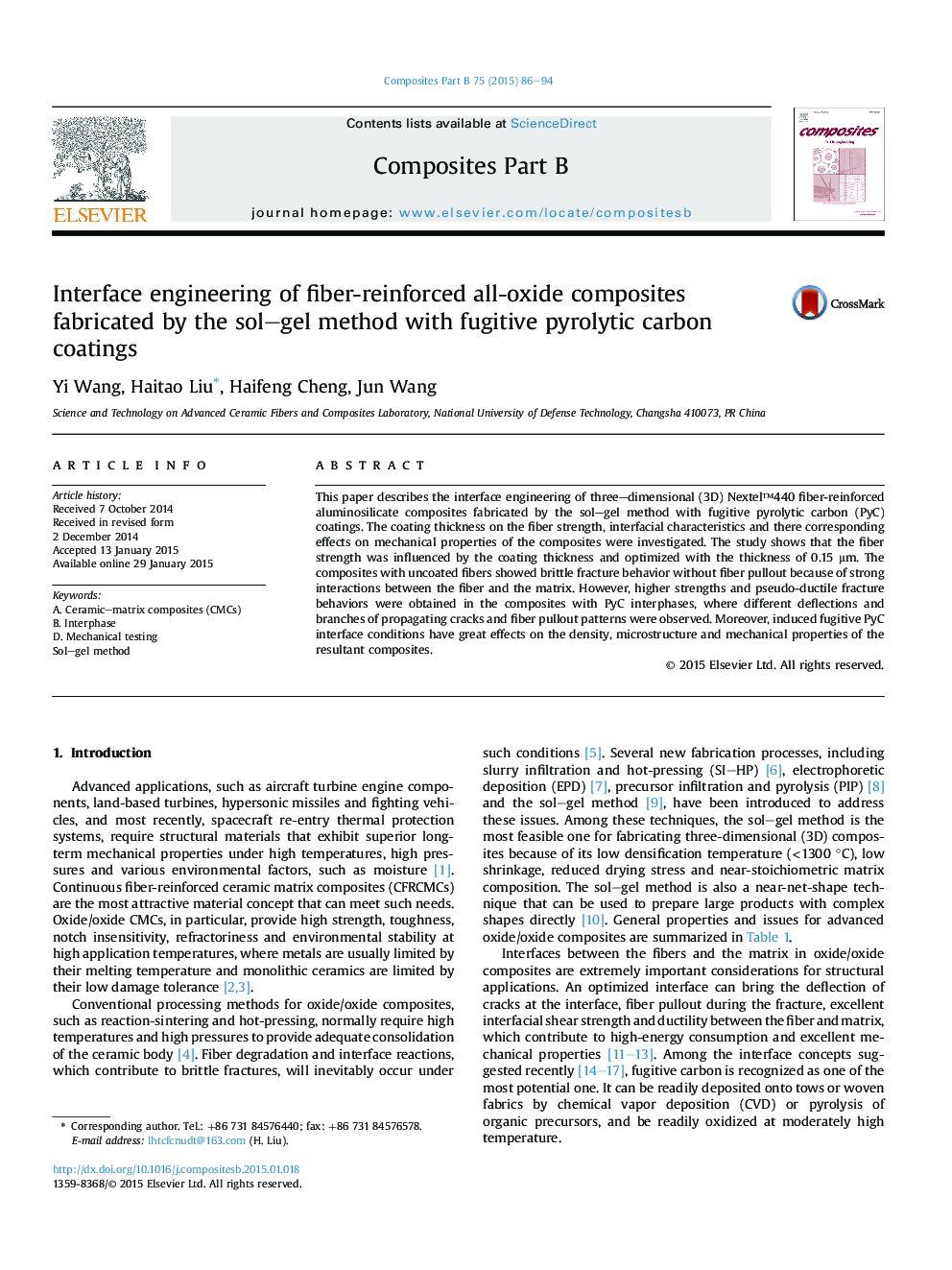| Article ID | Journal | Published Year | Pages | File Type |
|---|---|---|---|---|
| 817361 | Composites Part B: Engineering | 2015 | 9 Pages |
Abstract
This paper describes the interface engineering of three-dimensional (3D) Nextelâ¢440 fiber-reinforced aluminosilicate composites fabricated by the sol-gel method with fugitive pyrolytic carbon (PyC) coatings. The coating thickness on the fiber strength, interfacial characteristics and there corresponding effects on mechanical properties of the composites were investigated. The study shows that the fiber strength was influenced by the coating thickness and optimized with the thickness of 0.15 μm. The composites with uncoated fibers showed brittle fracture behavior without fiber pullout because of strong interactions between the fiber and the matrix. However, higher strengths and pseudo-ductile fracture behaviors were obtained in the composites with PyC interphases, where different deflections and branches of propagating cracks and fiber pullout patterns were observed. Moreover, induced fugitive PyC interface conditions have great effects on the density, microstructure and mechanical properties of the resultant composites.
Related Topics
Physical Sciences and Engineering
Engineering
Engineering (General)
Authors
Yi Wang, Haitao Liu, Haifeng Cheng, Jun Wang,
